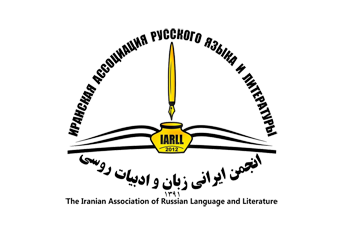TEACHING WORD-COMBINATION OF RUSSIAN LANGUAGE IN IRANIAN UNIVERSITIES AT THE UNDERGRADUATE LEVEL
DOI:
https://doi.org/10.61186/iarll.24.7Keywords:
Subordination, Word-Combination, Teaching, Iranian Student, Russian LanguageAbstract
This paper focuses on the teaching of word combinations in the Russian language to Iranian undergraduate students. Word combinations are a crucial aspect of syntax, significantly impacting effective communication in Russian. Mastery of correct word combinations enables students to construct coherent sentences and, subsequently, comprehensive texts. However, in the context of teaching Russian in Iran, there is often inadequate emphasis on this vital component; word combinations typically occupy only a minor portion of the curriculum. To address this gap, we propose defining and presenting a minimum content framework specifically tailored for Iranian learners. The primary objective is to analyze the types of subordination within word combinations that are most relevant for these students. Furthermore, we offer practical recommendations aimed at enhancing the teaching and learning process of word combinations in Iranian universities. By prioritizing this area, we hope to improve students' overall proficiency in Russian and facilitate their ability to communicate more effectively in both academic and everyday contexts.
Extended abstract:
This paper is devoted to teaching word-combination in the Russian language to Iranian students at the undergraduate level. Word-combination, a fundamental subject of syntax, plays a crucial role in facilitating effective communication in Russian. Mastering the correct combination of words enables students to construct sentences and, subsequently, coherent texts.
In Russian, there are three types of subordinate connections within a word-combination: agreement, government, and parataxis.
-
Agreement is a type of subordination in which the dependent word matches the main word in grammatical form (e.g., gender, number, and case).
-
Government is a type of subordinate connection in which the main word controls the dependent word, requiring it to appear in a specific case. Government can be either prepositional or non-prepositional.
-
Parataxis is a type of subordination in which the dependence between components is expressed semantically rather than grammatically.
In the process of teaching Russian to undergraduate students in Iran, insufficient attention is given to the topic of word-combination. This subject occupies only a small portion of the course content. Furthermore, this study highlights several shortcomings in the current teaching approach, including:
-
An inadequate number of lessons dedicated to syntax;
-
Teaching the topic in an inappropriate semester;
-
The lack of a specialized textbook tailored to Iranian students;
-
The existence of varying equivalents for the term "word-combination" in Persian, leading to potential confusion.
To address these issues, it is essential to define and present the minimum content required for teaching Russian word-combination to an Iranian audience. Based on this study, the authors recommend the following minimum content:
-
Definition of syntax and its units;
-
Definition of a word and a word-combination;
-
The difference between a word-combination and a sentence;
-
Explanation of phrases that do not qualify as word-combinations;
-
Types of syntactic connections: coordinating and subordinating connections;
-
Identification of the main word and dependent word in a word-combination;
-
Use of symbols to emphasize members of a word-combination and sentence;
-
Types of subordinate connections: agreement, government, and parataxis;
-
Providing examples of similar concepts from the students' native language (Persian);
-
Complete and incomplete agreement;
-
Prepositional and non-prepositional government.
The primary goal of this study is to examine the types of subordination in word-combinations when teaching Russian to Iranian undergraduate students. Additionally, the authors propose several recommendations to improve the learning process for word-combinations in Iran:
-
Increasing the number of lessons dedicated to syntax, particularly the topic of word-combinations;
-
Using symbols to highlight members of word-combinations and sentences;
-
Teaching based on a specialized textbook with comprehensive content on word-combinations;
-
Incorporating a variety of exercises to reinforce the material;
-
Providing students with educational tables and slides for better visualization and understanding.
Downloads
Published
How to Cite
Issue
Section
License
Copyright (c) 2024 Issledovatel'skiy Zhurnal Russkogo Yazyka I Literatury

This work is licensed under a Creative Commons Attribution 4.0 International License.
![]()
"Creative Commons Attribution 4.0 International (CC-BY 4.0)"


